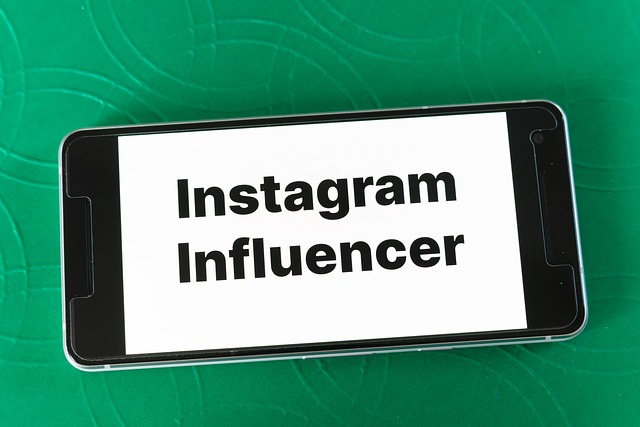Why Influencer Marketing Still Works
Trust in traditional advertising has taken a serious hit in the digital age. Consumers are no longer persuaded by polished ads or celebrity spokespeople alone—they want genuine opinions from voices they trust. This is where influencer marketing continues to shine.
Trust-Based Marketing in a Skeptical World
In an environment where skepticism runs high, influencers serve as relatable, credible messengers. Their deep connection with niche audiences allows them to communicate messages in a way that feels personal rather than promotional.
- Influencers often share real opinions and experiences
- Audiences trust content that feels unscripted and honest
- Peer-to-peer recommendations outperform most paid ads
ROI Potential vs. Traditional Advertising
When executed strategically, influencer campaigns often deliver stronger ROI than traditional media ads. Brands can see more direct engagement, trackable conversions, and scalable awareness with significantly lower budgets.
- Better targeting = less wasted ad spend
- Engaged audiences are more likely to take action
- High-performing creators build long-term returns
The Power of Personal Recommendations
One of the most valuable elements of influencer marketing is its ability to simulate word-of-mouth at scale. Whether it’s a product review, tutorial, or casual shout-out, audiences often respond positively to content that feels like a recommendation from a friend.
- Influencers build one-on-one trust over time
- Their endorsements carry more weight than traditional ads
- Social proof drives purchasing decisions
Influencer marketing works because it blends reach with relevance—delivering messages through trusted voices rather than corporate megaphones.
Step 1: Define Your Goals First
Influencer marketing isn’t one-size-fits-all. Before you start browsing profiles or drafting DMs, get clear on what you actually want out of the campaign. Awareness, engagement, conversions—each one requires a different approach.
If your goal is awareness, think broad reach: wide-net influencers, attention-grabbing content, and visibility over clicks. Engagement means narrowing the focus to influencers with strong community bonds—look for high comment activity and back-and-forth with followers. If you’re aiming for conversions, you’ll need influencers who can sell, not just talk. That often means smaller creators with deep trust and a defined niche.
Whatever you choose, make sure your internal metrics match. Don’t get mad about low click-through if your goal was awareness. Set up realistic KPIs early. The clearer your target, the better your campaign will perform—and the less you’ll overspend chasing the wrong signals.
Step 2: Find the Right Influencer Fit
Too many brands still chase follower counts like it’s 2016. It’s not. Influence in 2024 is about connection, not crowd size. Real engagement—comments, shares, actual conversation—beats inflated numbers every time. So before you throw budget at someone with a million followers, ask a better question: does this person speak to the people you care about?
Micro-influencers (typically under 100k followers) often drive more action than their macro counterparts. They know their audience. There’s trust, less noise, and more dialogue. Macro-influencers bring reach—it’s volume over intimacy. Fine if you’re going for brand awareness at scale. But if the goal is conversions or cultivating community, micro might give you more bang for your buck.
Vetting goes beyond analytics. Take the time to watch their content. Does their voice match your brand? Is the interaction organic or forced? Look at comment sections—are people paying attention, or just scrolling past? Authenticity isn’t just a vibe, it’s a filter. The better you apply it, the cleaner your partnerships will be.
Step 3: Collaborate, Don’t Control
Influencer marketing works best when brands get out of the way—at least a little. Today’s audience has a sharp eye for anything that feels scripted, and they tune out fast if content reeks of corporate influence. That’s why giving influencers creative freedom isn’t optional anymore—it’s the difference between content that works and content that flops.
The sweet spot? Co-created content. You bring the product, the goal, and a clear idea of what success looks like. The influencer brings tone, timing, and storytelling that fits their audience. It’s not about handing over the wheel. It’s about not grabbing it every five seconds.
Set clear deliverables—messaging points, deadlines, usage rights—but resist the urge to control every scene or caption. Influencers know what lands with their followers. Let them lead the delivery. You’re hiring them for that voice. Let it speak.
Step 4: Measure What Matters
Tracking the performance of your influencer campaigns isn’t just about looking at likes or views. It’s about monitoring the metrics that actually tie back to your business goals. Here’s how to make sure you’re measuring what really counts.
Match Metrics to Your Campaign Objectives
Not all campaigns aim for the same outcome. Identifying your primary goal helps determine which metrics matter most:
- Brand Awareness: Focus on reach, impressions, and mentions
- Engagement: Track likes, comments, shares, and saves
- Conversions: Measure click-through rate (CTR), unique link clicks, and sales generated
- Customer Retention or Loyalty: Look at repeat traffic, email signups, or community growth
Engagement Rate vs. Vanity Metrics
Vanity metrics—like overall follower count or total video views—can look impressive, but they don’t always indicate real impact.
Instead, pay close attention to:
- Engagement Rate: Measures how actively people interact with the content (e.g., likes, comments, shares per post)
- Click-Through Rate (CTR): Tells you if people are taking action after seeing the content
- Save Rate: A high number of saves can indicate long-term value
A smaller, more engaged audience often converts better than a large but passive one.
Tools and Platforms to Track Performance
Investing in the right tools can give you clearer insights and make reporting easier. Popular platforms include:
- Google Analytics: Ideal for tracking traffic and behavior from influencer links
- UTM Parameters: Custom URLs help attribute clicks and actions to specific influencers or campaigns
- Creator Management Platforms: Tools like Aspire, CreatorIQ, or GRIN offer built-in tracking and analytics
- Social Media Dashboards: Native tools (like Instagram Insights or TikTok Analytics) show post-specific data
Remember, measuring success accurately enables you to fine-tune future campaigns, justify ROI, and build stronger partnerships with influencers who truly deliver.
Step 5: Think Beyond One-Off Campaigns
Chasing one big viral hit is tempting, but it’s rarely where real results come from. Brands that win with influencer marketing approach it the same way you’d approach training—consistent reps over time. One great post might spike impressions, but it probably won’t shift long-term perception or drive dependable sales. Consistency, though—that compounds.
The most effective influencer strategies in 2024 involve long-term partnerships. Think series, check-ins, and integrated storylines rather than a single #ad. When creators regularly talk about a brand, it stops feeling like a promo and starts feeling like part of their worldview. That’s when audiences listen.
Turn that vibe into loyalty. Give creators the tools and trust to represent your brand in their style. Help them become advocates, not just deliverables on a calendar. It pays off when their audience starts repeating your message without prompting—that’s ROI you can’t buy with a one-shot post.
Common Pitfalls to Avoid
Even well-intentioned influencer campaigns can fall flat if brands overlook key missteps. Avoid these three common mistakes to ensure your investment pays off—and preserves your brand reputation.
Overpaying for Underperformance
Cost doesn’t always equal value. A high follower count can be deceiving if it doesn’t translate into real engagement or conversions. Brands often waste budget by focusing on influencer reach rather than actual results.
- Don’t pay premium rates for poor ROI
- Prioritize influencers who align with your niche and show conversion history
- Compare cost per conversion—not just cost per post
Mismatched Brand-Influencer Alignment
If an influencer’s tone, style, or audience doesn’t reflect your brand values, the campaign can confuse or even alienate your target customers. Alignment is more important than size.
- Look for shared values and overlapping audience demographics
- Avoid tone-deaf partnerships that feel inauthentic
- Consistency between your brand voice and the influencer’s content builds credibility
Ignoring Influencer Insight
Influencers know their audience better than anyone else. Overlooking their feedback or micromanaging creative direction leads to disconnected content that underperforms.
- Collaborate—don’t dictate
- Take advantage of influencer input on tone, timing, and format
- Treat influencers as strategic partners, not just content distributors
Steering clear of these pitfalls not only protects your investment—it also strengthens your brand’s position in the influencer space.
Real-World Context & Strategy Insights
Influencer content isn’t just riding trends—it’s shaping them. As social media platforms shift toward more immersive, personal, and fast-paced experiences, influencers are adapting in real time. From short-form video on TikTok and Instagram Reels to storytelling-heavy posts on YouTube and even long-form captions on LinkedIn, creators are meeting users where their attention already lives.
What’s changed? The algorithm favors relevance, not reach. That means niche creators with strong engagement often outperform big-name influencers with lukewarm audiences. And brands are paying attention. They’re leaning into content that blends seamlessly into feeds, feels organic, and drives interaction—not just impressions.
Another shift: creators are becoming hubs of micro-communities. Their followers don’t just watch—they comment, share, and act. This ripple effect turns a single post into a story that travels. That’s where the real value lies: not in scale alone, but in cultural traction.
For a deeper look at how these trends impact brand visibility, see The Impact of Social Media on Brand Awareness.
Final Take
Influencer marketing gets called a lot of things—risky, unpredictable, oversaturated. But here’s the truth: it still works, when treated like what it actually is—a business strategy. Not a magic trick.
The best campaigns come down to three things: finding the right partner, building trust, and knowing what you’re measuring. Skip one, and you’re throwing money into a pit. Get them right, and the results go far beyond clicks and views. You’re building something deeper—credibility, community, and long-term brand alignment.
Stop chasing one-off hits. Focus on fit over flash. Whether you’re a brand or a creator, the only magic that matters is the kind built on consistency, clarity, and connection.



